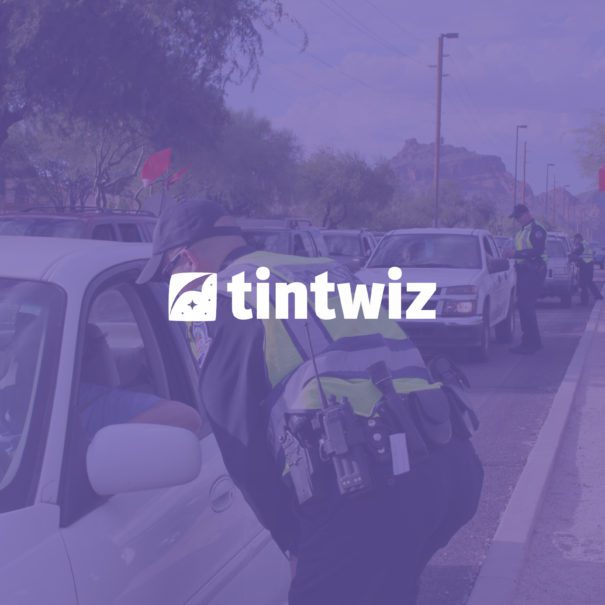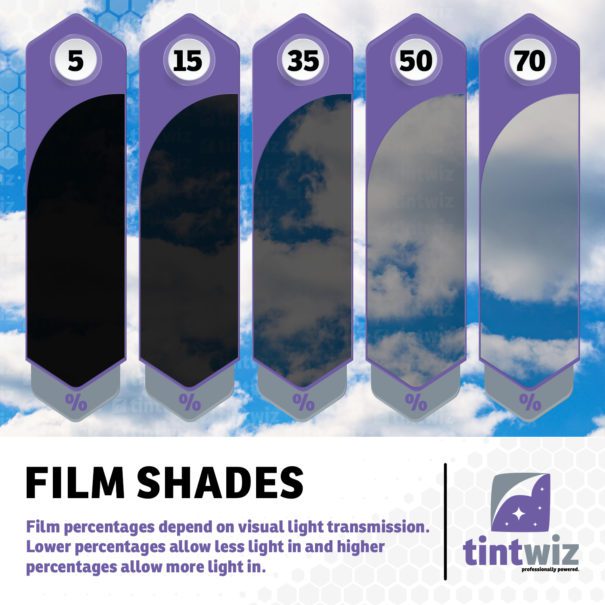Darkest legal tint for Cars in North Carolina
- Windshield: Non-reflective tint is allowed above the manufacturer’s AS-1 line or top 5 inches
- Front Side windows: Must allow more than 35% of light in.
- Back Side windows: Must allow more than 35% of light in.
- Rear window: Must allow more than 35% of light in.
Darkest legal tint for SUV and Vans in North Carolina
- Windshield: Non-reflective tint is allowed above the manufacturer’s AS-1 line or top 5 inches
- Front Side windows: Must allow more than 35% of light in.
- Back Side windows: Any darkness window tint can be used
- Rear window: Any darkness window tint can be used
Please note: The accuracy, completeness, adequacy or currency of the content is not warranted or guaranteed. We are not lawyers or a law firm and we do not provide legal advice. We recommend you consult a lawyer or other appropriate professional if you want legal advice.
North Carolina first enacted window tint laws for cars, trucks, SUVs, and other vehicles in 2001, and while tint laws in NC are still applicable to most modern window film products, know that tint laws can change from year to year and that some newer types of tint did not exist when North Carolina tint laws were created.
To make sure your vehicle meets current North Carolina window tint law it’s a smart idea to know the exact VLT% (or visible light transmission percent, which means how light and see-through or dark and private the glass is) and to make sure you meet for VLT% rules for each window of your vehicle type.
Car window film is a good investment for anyone thinking of both short-term performance and looks of a car as well as long-term re-value of the vehicle. In North Carolina car tint adds privacy and enhances style the very day it’s applied and it lowers cabin temperatures even on long, hot southern summer days, making the car stay cooler, comfortable, and cost effective based on reduced battery and fuel savings thanks to less AC use.
In the long run, window tint blocks 99% of the ultraviolet light that causes interior fading, bleaching, and cracking on upholstery and hard surfaces so a vehicle will maintain its interior appearance and sale value.
Car window tint is a great investment, but because illegal window tint in North Carolina can come with hefty fines, you have to be sure your vehicle window tint meets with NC window film laws.
Legal Windshield Window Film in North Carolina
As you see in most states, the laws regarding windshield window tinting in North Carolina are easy to follow: you may apply non-reflective window film down to the glass manufacturer’s AS-1 line, which is a line about inches below where glass meets roof. If you cannot determine the location of the AS-1 line, use five inches as a reference for thickness of the tint strip. The same windshield tint rules apply to all vehicle types.
And bear in mind most cars, trucks, and SUVs come with factory tint pre-applied to the windshield, so there may be no need to get this window tint applied anyway. (If your vehicle does not have factory tint, you should get a legal nonreflective window film applied, as this tinting reduces sun glare, easing eye strain and making driving safer.)
Car Window Tint Laws in North Carolina
In North Carolina, cars (meaning sedans, coupes, and hatchbacks) follow different window tint laws than larger vehicles (like trucks, SUVs, and vans, often collectively called MPVs, or multi-purpose vehicles), so we are breaking down the regulations by vehicle type separately.
Cars in North Carolina may have a window tint on the side windows and rear windshield that allows at least 35% or more of the sun’s visible light into the car. This is more than a dark enough tint to add privacy and to reduce sun glare, but 35% VLT tint also still allows a view into the car from up close, which is important for police officers during traffic stops.
This 35% VLT window tint must not be more than 20% reflective.
Auto Window Tint Rules in North Carolina for MPVs
The forward side windows of vans, SUVs, and trucks in North Carolina must meet the same standards as cars, having window tint no darker than 35% VLT. Rear side windows of MPVs can have any darkness of window film, including blackout privacy tint that does not afford a view into the interior of the automobile at all.
Rear windows (AKA the back windshields) may also be tinted to any darkness under North Carolina rules. As with cars, window tint for MPVs in North Carolina must not be more than 20% reflective.
Other Car Tint Rules in North Carolina
If the rear window of your vehicle is tinted North Carolina rules stipulate that you must have twin side view mirrors in good working order.
The window tint colors red, amber, and yellow are banned under North Carolina law, as are shades of these colors, and as highly reflective tint is illegal, some metallic finish tint are also effectively illegal.
A 3% variance for tint darkness is allowed, so even a car with 32% VLT tint on the side and rear windows will usually avoid a window tint violation ticket in the state.
Manufacturers and vendors of window tint in North Carolina do not need certify the film they sell as meeting state rules, nor do vehicle owners need to put stickers identifying tint as legal on the car, though such sticker are a good way to quickly avoid an issue during a traffic stop or inspection.
North Carolina tint rules do allow for medical exemptions for darker window tint, so if you have issues with photosensitivity, skin disorders, or other medical conditions that may merit darker window tint than allowed by law, talk to a doctor and to a DMV or police official.
Window Tint Law Violations in North Carolina
Authorities assess window tint violations in North Carolina as non-criminal, non-moving traffic issues, but the costs can be expensive enough to where they are an issue you want to avoid. Window tint tickets can cost a $50 fine plus court expenses that quickly add hundreds to the fee.
Likewise, if you have dark tint granted by a medical exemption but do not have a sticker proving your legal medical window tint exemption, you may face a $200 tint ticket, and that for window film you are allowed to have but have not properly demarcated.









